Introduction to Dental Anxiety and Oral Health
Dental anxiety is a widespread issue affecting millions globally, influencing how individuals care for their oral health and utilize dental services. This article explores key statistics on the prevalence of dental anxiety, its profound impact on oral hygiene behaviors and health outcomes, and evidence-based approaches for managing this condition to improve quality of life.
Prevalence of Dental Anxiety Across Populations
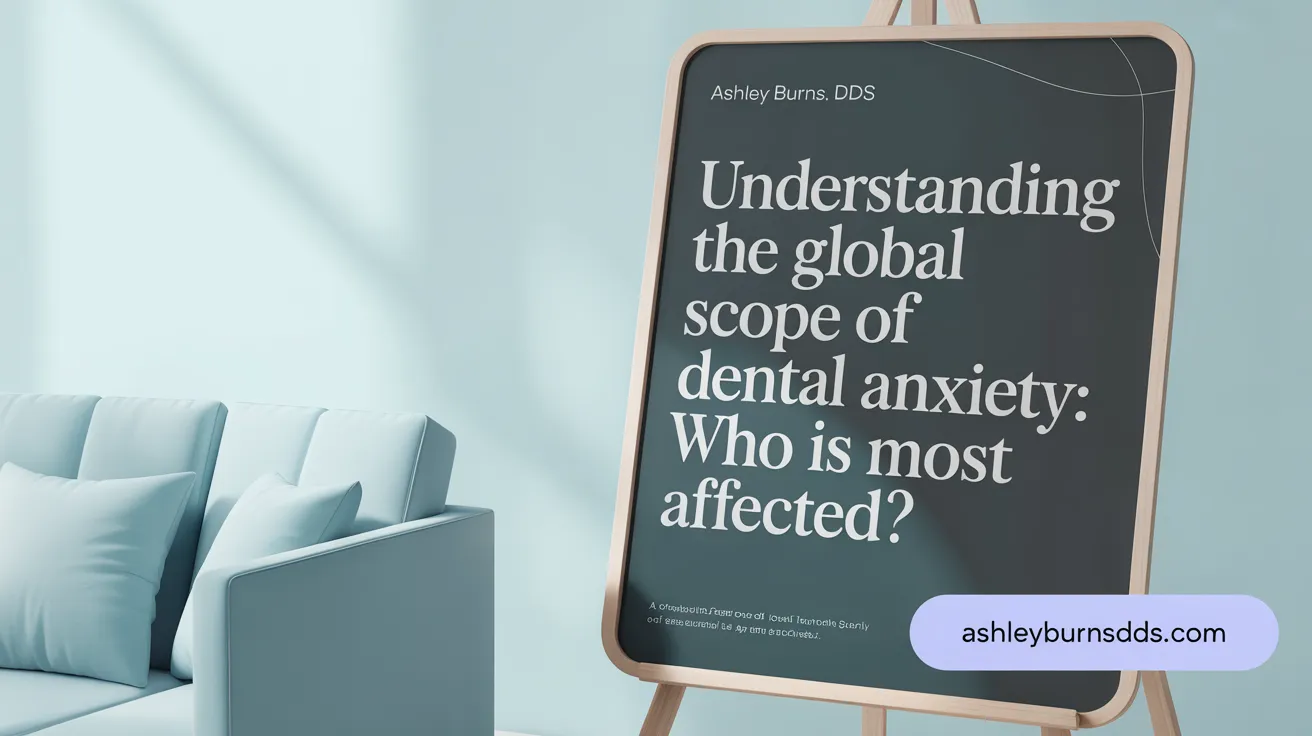
What is the prevalence of dental anxiety in the general population?
Estimates from various studies suggest that a significant portion of the adult population experiences some degree of dental anxiety. Globally, about 15% of adults are affected by dental fear and anxiety, with a notable 12.4% suffering from high levels, and approximately 3.3% experiencing severe dental anxiety or dental phobia.
Research indicates considerable variation in prevalence rates based on demographic factors. Women tend to report higher rates of dental anxiety than men, with some studies showing women experiencing this fear approximately twice as often. Younger adults, particularly those aged 20-34, often display higher anxiety scores compared to older populations (Dental anxiety overview, Dental anxiety levels and perceived quality of life).
Socioeconomic status also plays a critical role. Individuals from lower-income backgrounds or with lower education levels are more prone to dental anxiety, possibly due to concerns about treatment costs, reduced access to care, or less familiarity with dental procedures (Impact of dental anxiety on oral health).
Measurement approaches influence reported prevalence figures greatly. Different assessment tools such as the Dental Anxiety Scale (DAS), Modified Dental Anxiety Scale (MDAS), and other questionnaires can yield varying results because of diverse cut-offs and scoring methods (Dental anxiety statistics).
Culturally, prevalence varies across countries and regions, with higher rates reported in some developing nations and among specific ethnic groups, often reflecting differences in healthcare access, cultural norms, and health literacy (Prevalence of dental anxiety in Kathmandu).
In summary, dental anxiety is a widespread issue affecting approximately 10-20% of adults worldwide, with notable variations based on demographic and methodological factors. Its high prevalence underscores the importance of tailored strategies in dental practice to manage this common barrier to optimal oral health (Dental Anxiety Overview and Management).
Primary Causes and Risk Factors of Dental Anxiety
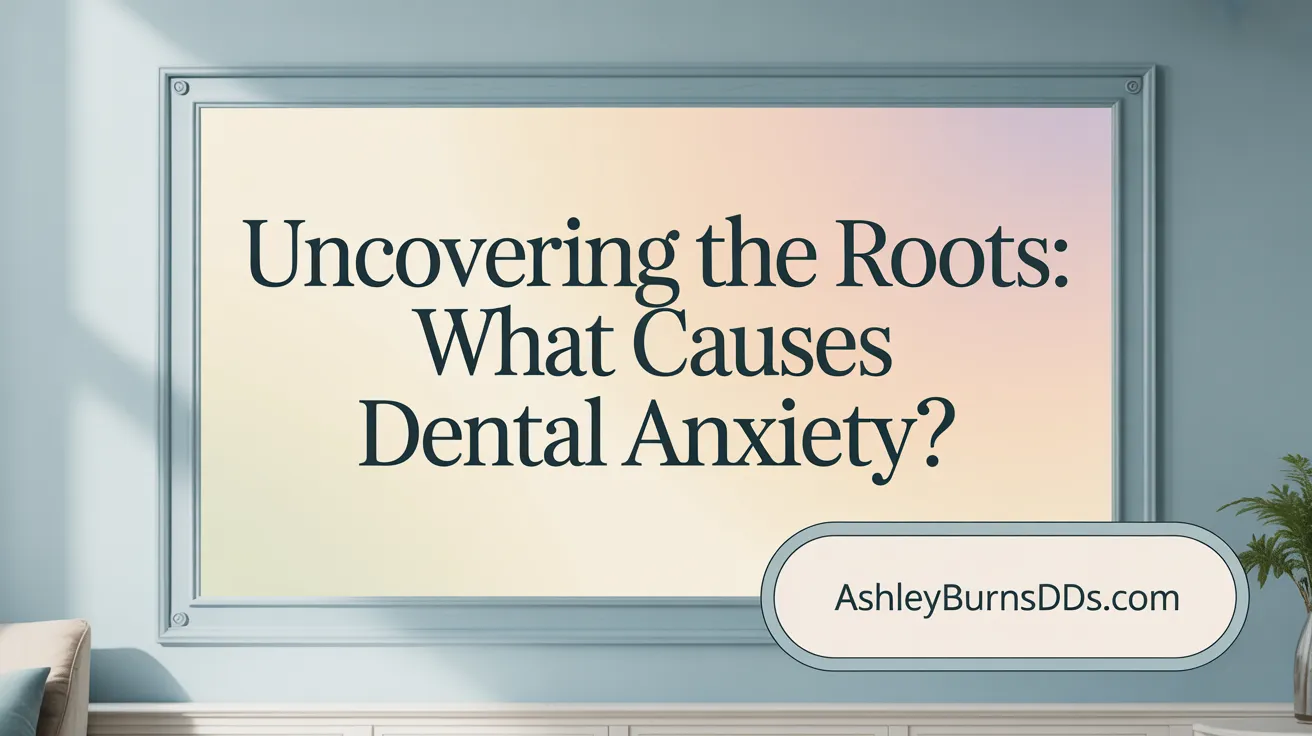
What are the primary causes and risk factors associated with dental anxiety?
Dental anxiety often originates from traumatic dental experiences and fear, especially during childhood. Invasive, painful, or distressing treatments can leave lasting impressions, leading to heightened fear in subsequent visits. Many individuals recall feelings of helplessness, loss of control, or discomfort during procedures, which can develop into a deep-seated phobia.
Psychological factors also play a significant role. Conditions such as generalized anxiety disorder, post-traumatic stress disorder (PTSD), and other mental health issues can increase vulnerability to dental fear. Personal traits like neuroticism, which involves proneness to stress and emotional instability, further amplify the risk.
Sociodemographic variables are influential as well. Younger adults tend to report higher anxiety levels, possibly due to less exposure to dental care or negative past experiences. Women, according to multiple studies, display higher prevalence of dental fear, potentially due to social and psychological influences (dental anxiety by gender). Additionally, individuals from lower socioeconomic backgrounds often experience greater anxiety, possibly linked to concerns about treatment costs, access issues, or educational disparities.
Vicarious learning is another important factor. Observing family members or peers exhibiting fear, or hearing negative stories in the media, can transmit dental fears. Moreover, genetics may predispose some individuals to higher anxiety levels, with heritability estimates suggesting a biological component.
In summary, dental anxiety is multifactorial, involving past traumatic experiences, psychological vulnerabilities, sociodemographic influences, and learned behaviors. Understanding these factors is crucial for tailoring effective interventions and improving dental care engagement (Dental Anxiety Overview and Factors Influencing Dental Anxiety).
Impact of Dental Anxiety on Oral Health Behaviors and Outcomes
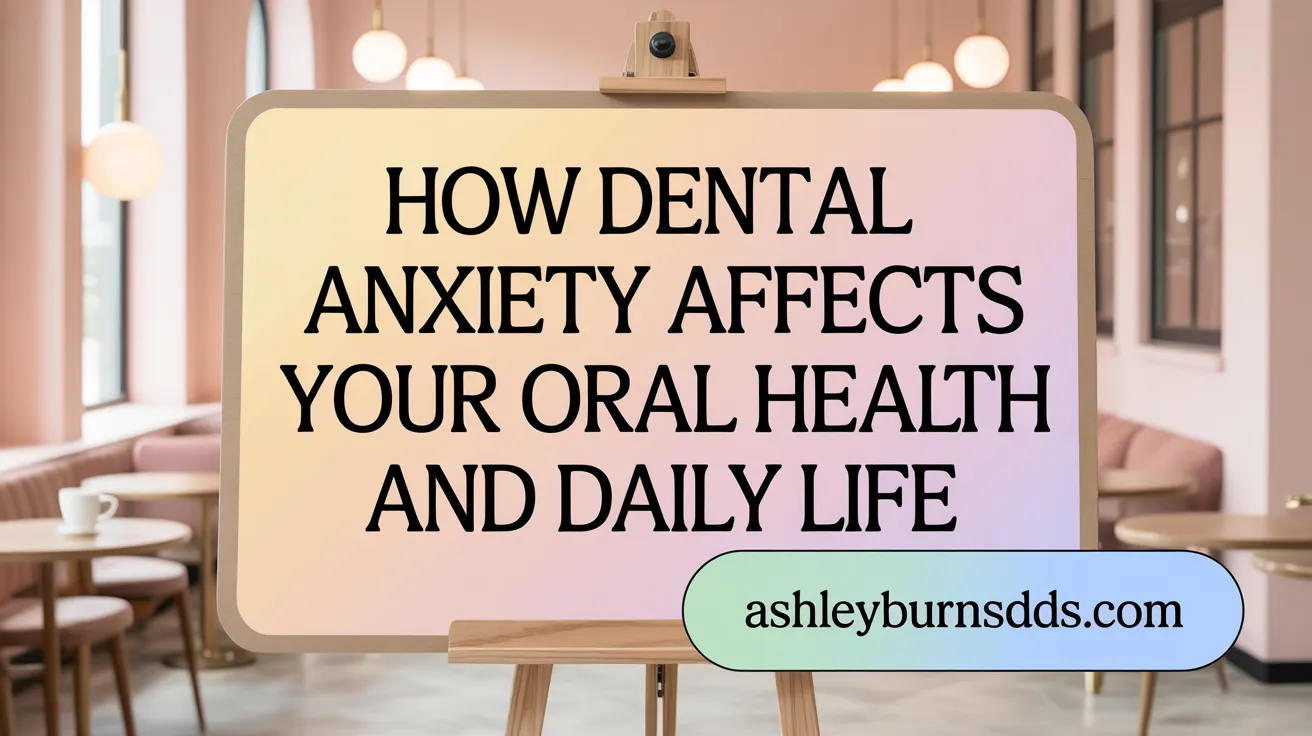
How does dental anxiety impact oral health behaviors and outcomes?
Dental anxiety significantly influences individuals' oral health routines and the overall health of their mouth. People with higher anxiety levels tend to avoid regular dental visits, which delays essential treatments such as fillings, cleanings, and gum disease management. This avoidance results in untreated dental problems like cavities, periodontal disease, and ultimately, tooth loss Dental anxiety effects, Irregular dental attendance, Dental fear and oral health.
Research shows that anxious individuals often neglect their oral hygiene practices. They are less likely to brush frequently, particularly avoiding use of electric toothbrushes, which are generally associated with better plaque control Impact of Dental Anxiety on Oral Hygiene Practices, Correlation Between Dental Anxiety and Tooth Brushing Frequency, Dental Anxiety and Use of Electric Versus Manual Toothbrushes, Dental Anxiety Effects on Calculus Removal and Teeth Cleaning Habits. Furthermore, these individuals are less inclined to undergo professional procedures like calculus removal and professional cleanings, both of which are vital for maintaining oral health.
The consequence of these behaviors is a deterioration in oral health-related quality of life. People suffering from dental fear report more oral health problems and experience greater discomfort and psychosocial issues such as feelings of shame and social withdrawal Dental phobia prevalence, Effects of dental phobia, Oral diseases from dental avoidance, Correlation between dental anxiety and periodontal disease. The cycle of avoidance and poor oral health not only affects physical well-being but also impacts psychosocial health, emphasizing the importance of managing dental anxiety to promote better oral health outcomes Dental anxiety and oral health, Effects of dental anxiety, Avoiding dental visits risks.
Relationship Between Dental Anxiety and Oral Hygiene Practices
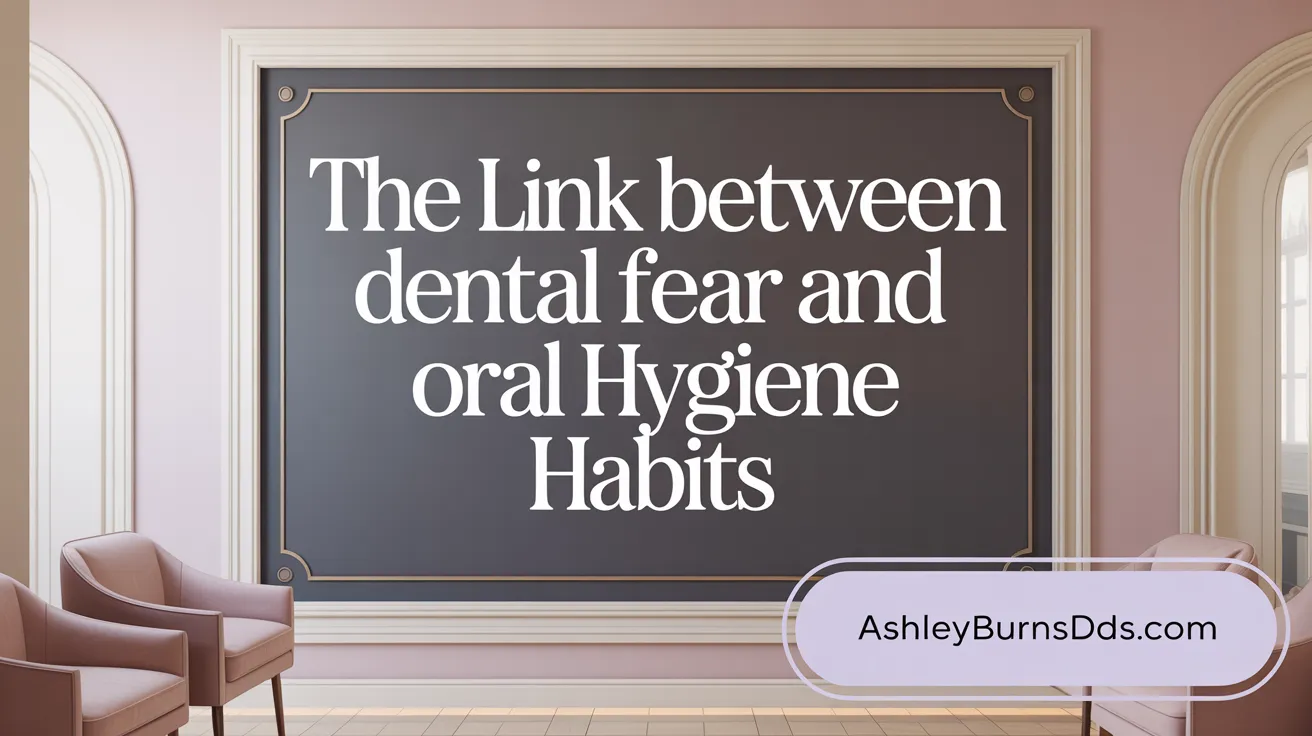
What is the relationship between dental anxiety and oral hygiene practices?
Research shows a clear link between dental anxiety and oral hygiene practices. Individuals with higher levels of dental fear tend to brush their teeth less often. Specifically, those with elevated anxiety scores are more likely to avoid regular brushing altogether, which can lead to plaque build-up and gum problems.
Moreover, people experiencing more dental anxiety are less inclined to participate in professional cleaning procedures, such as calculus removal and routine teeth cleanings. This avoidance further increases the risk of dental disease (Dental anxiety and oral health).
When it comes to the type of toothbrush, those with higher anxiety scores often prefer manual toothbrushes over electric ones. Interestingly, electric toothbrush users generally report lower levels of dental anxiety, perhaps because these devices can make cleaning feel less invasive or intimidating (Effect of electric toothbrush use on dental anxiety.
Despite these trends in brushing habits and preferences, behaviors like flossing and mouthwash use are usually not significantly impacted by dental anxiety. Many anxious patients still engage in these routines, though their overall oral health may suffer due to neglect of regular professional care.
How does dental anxiety influence professional oral hygiene procedures?
Individuals with elevated dental fear are less likely to undergo professional treatments such as calculus removal and teeth cleaning. This avoidance stems from their fear of pain or negative past experiences at the dentist (Impact of dental anxiety on professional dental cleaning. As a result, oral health deteriorates over time, increasing the likelihood of cavities, gum disease, and other complications.
In summary, dental anxiety often leads to poorer oral hygiene practices, mainly through reduced frequency of brushing and avoidance of professional care. While preferences for certain types of toothbrushes may vary, addressing these fears through communication and tailored interventions can help improve daily oral hygiene and long-term oral health outcomes (Dental Anxiety and Oral Health, Managing Dental Anxiety.
Effects of Dental Anxiety on Dental Attendance and Healthcare Utilization
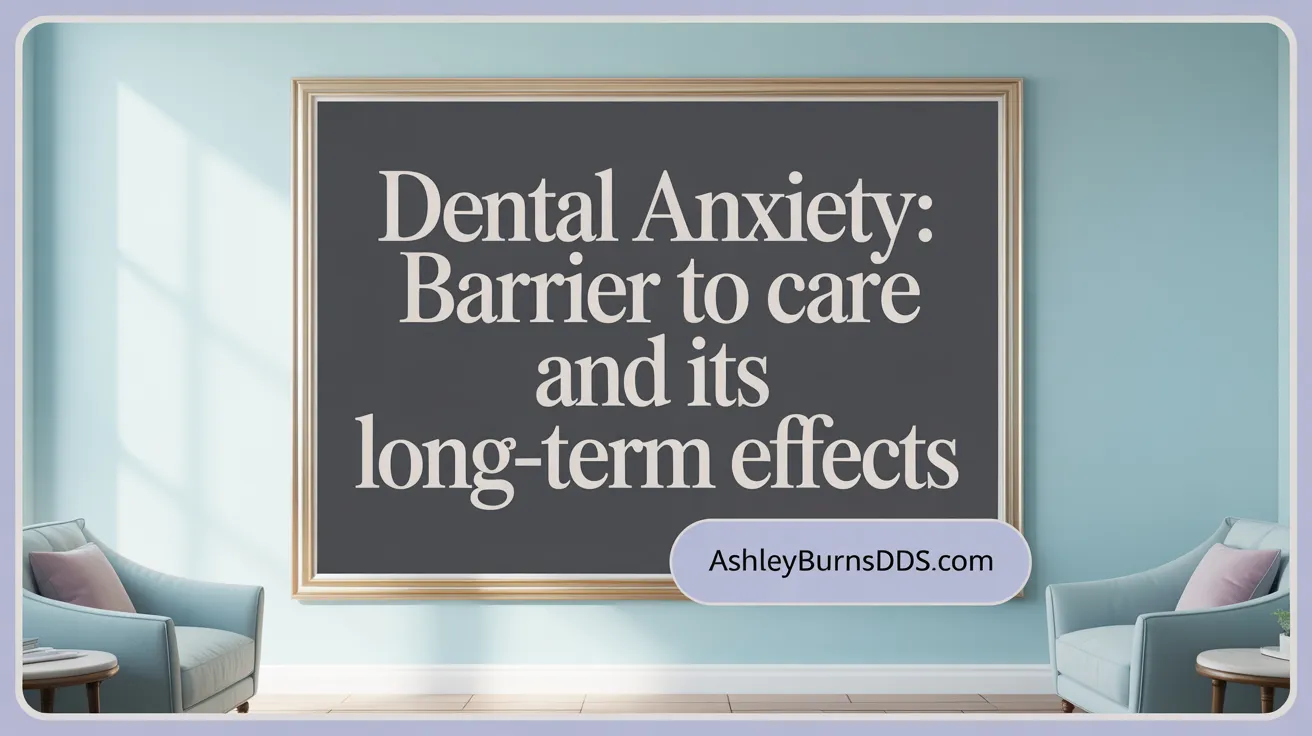
How does dental anxiety affect attendance to dental treatments and healthcare utilization?
Dental anxiety significantly impacts how often individuals seek dental care. People with high levels of anxiety tend to avoid routine visits, often postponing or canceling appointments altogether. This avoidance behavior is driven by fear of pain, negative experiences, or discomfort associated with dental procedures (Dental anxiety effects on oral health, Dental anxiety effects.
As a consequence, many delayed treatments escalate into dental emergencies, such as severe pain or infections, which require urgent and often more invasive intervention. This pattern results in increased healthcare costs and greater physical and psychological burden for patients (Dental anxiety and oral health, Dental anxiety effects).
Past traumatic dental experiences, fear of needles, or loud noises in the clinic contribute to the reluctance to attend regular check-ups. These fears become a barrier to maintaining good oral health and prevent early detection of dental problems (Origins of dental fear in childhood, origin of dental anxiety).
Fortunately, strategies such as sedation dentistry—including options like nitrous oxide, oral sedation, or intravenous anesthesia—along with behavioral interventions like cognitive-behavioral therapy and patient education, have proven effective. These approaches help reduce anxiety, improve treatment adherence, and encourage regular attendance (Dental Anxiety Management Strategies, Managing dental anxiety).
Ultimately, addressing dental fear not only improves individual oral health outcomes but also reduces the need for costly and invasive emergency procedures, fostering a healthier, more compliant patient population (Dental anxiety and oral health-related quality of life, Dental anxiety and health outcomes.
Methodologies and Standards for Assessing Dental Anxiety and Oral Health
To accurately measure the prevalence and impact of dental anxiety and assess oral health status, standardized and validated methodologies are employed worldwide. One of the most common tools for evaluating dental anxiety is the Dental Anxiety Scale (DAS) assessment, including its variations like the Modified Dental Anxiety Scale (MDAS) and the Corah’s Dental Anxiety Scale (CDAS). These questionnaires consist of several items that quantify a patient’s level of anxiety, allowing clinicians and researchers to categorize individuals into different anxiety levels—ranging from little or no anxiety to severe phobia.
Alongside psychological assessment tools, oral health status is evaluated through clinical indices such as the Decayed, Missing, and Filled Teeth (DMFT) index for caries, and periodontal indices like the probing pocket depth and bleeding on probing to assess periodontal health. These clinical evaluations often follow protocols outlined by the World Health Organization (WHO) oral health survey methods, using standardized survey methods to ensure comparability across different populations and countries.
The WHO’s 'Oral Health Surveys – Basic Methods' provides comprehensive guidelines for conducting oral health assessments worldwide. These standards assist in collecting reliable data on oral diseases and risk factors, enabling public health officials to monitor trends, plan intervention programs, and evaluate the effectiveness of oral health initiatives.
Combining psychological measures like DAS with clinical indices delivers a holistic understanding of the oral health challenges related to dental anxiety. Consistency in methodology, including the use of validated tools and standardized survey protocols, is essential for producing credible data that can inform policy and clinical practice globally. Such integrated approaches are vital for developing targeted strategies to reduce dental fear and improve overall oral health outcomes.
Influence of Dental Anxiety on Quality of Life Related to Oral Health
Dental anxiety does not only influence dental care behaviors but also has profound effects on individuals' overall quality of life related to oral health. People experiencing higher levels of dental fear often perceive their oral health negatively, which decreases their satisfaction with dental aesthetics. Such feelings of dissatisfaction can lead to emotional distress, including shame and embarrassment about their dental appearance (Dental phobia and dental caries burden).
Beyond the physical aspect, dental anxiety can significantly impact psychosocial well-being. Those with elevated anxiety levels tend to withdraw socially due to fears of dental-related stigma or negative judgments, further diminishing their social interactions and quality of life (Dental phobia and dental caries burden.
Research shows a clear relationship between anxiety levels and assessments of oral health-related quality of life (OHRQOL). Higher dental anxiety scores are positively correlated with worse OHRQOL scores, meaning that as fear increases, individuals report more problems and impairments in their daily lives related to oral health (Impact of dental anxiety on oral hygiene practices, Dental anxiety prevalence among patients).
This cycle of anxiety and perceived poor oral health can have long-term repercussions. Chronic psychological stress related to dental fears may contribute to broader mental health issues, affecting overall life satisfaction (Link Between Dental Health and Mental Health). Furthermore, avoidance behaviors often resulting from dental fear hinder timely dental care, allowing minor issues to develop into severe problems that further reduce quality of life (Dental anxiety effects on oral health.
Addressing dental anxiety through patient education, behavioral strategies, and appropriate sedation options can help improve individuals' perceptions and management of their oral health. This, in turn, promotes better psychosocial outcomes and a more positive overall life experience (Dental Anxiety Overview, Dental Anxiety: Assessment and Management.
Long-term Consequences of Dental Anxiety on Oral and Psychological Well-being
What are the long-term consequences of dental anxiety on oral health status and psychological well-being?
Dental anxiety, if left unaddressed, can have profound long-term effects on both oral health and mental health. Over time, individuals who avoid regular dental care due to fear are more likely to develop severe dental problems such as caries (cavities), gum disease, and tooth loss. These oral health issues not only cause pain and functional limitations but also increase the likelihood of systemic health risks, including cardiovascular disease and diabetes (Dental anxiety and oral health, Dental phobia and dental caries burden.
Beyond physical health, high dental anxiety significantly impacts psychological well-being. Persistent fear and avoidance behaviors can lead to increased stress and feelings of helplessness. This emotional toll often contributes to reduced self-esteem and social withdrawal, further diminishing quality of life. The cycle is bidirectional: poor oral health can worsen self-image and self-confidence, while heightened anxiety maintains or intensifies oral health neglect (Link Between Dental Health and Mental Health, Dental phobia and overall life satisfaction.
Crucially, dental anxiety creates a feedback loop where deteriorating oral conditions reinforce fears about dental visits, leading to further neglect. Early intervention and tailored behavioral management strategies are essential to break this cycle. Addressing dental fears proactively can help prevent irreversible damage, promote better oral hygiene, and improve overall mental health (Dental Anxiety Overview and Management, Impact of Dental Anxiety on Oral Hygiene Practices. Recognizing and managing dental anxiety thus plays a vital role in long-term oral and psychological health preservation.
Research Findings and Scientific Insights on Dental Anxiety and Phobia Impacts
Extensive research in recent years has underscored the significant impact of dental anxiety and phobia on oral health and overall well-being. Epidemiological studies and meta-analyses consistently reveal that dental fear affects approximately 15-16% of adults worldwide, with higher prevalence noted among women and younger populations. These individuals often exhibit avoidance behaviors, postponing or skipping dental visits, which leads to deteriorating oral health, increased occurrence of dental caries, and periodontal disease (Dental anxiety prevalence, Dental anxiety and oral health.
Scientific investigations demonstrate a clear correlation between dental anxiety and poorer oral health indices, such as higher DMFT (decayed, missing, and filled teeth) scores and increased periodontal issues (Correlation between dental anxiety and oral health quality of life, Relationship between dental anxiety and oral health. Moreover, higher anxiety levels are associated with reduced self-reported quality of life related to oral health, emphasizing the profound personal and social toll of dental phobia (Dental anxiety and oral health-related quality of life, Dental phobia and quality of life.
Factors influencing dental anxiety include sociodemographic variables such as lower socioeconomic status and limited education, which have been linked to increased fear and avoidance behaviors (Factors Influencing Dental Anxiety, Dental anxiety and sociodemographic factors. Gender differences are prominent; females tend to report higher anxiety levels, possibly related to physiological and social factors (Gender Differences in Dental Anxiety.
To combat this widespread issue, psychological treatments like cognitive-behavioral therapy (CBT), behavioral management strategies, and recent digital therapies have shown promising results (Behavioral treatments for dental anxiety, Digital therapies for dental fear). Digital interventions, like mobile app-based CBT programs, offer accessible and effective avenues for managing dental fears, especially when combined with in-clinic behavioral strategies (Cognitive-behavioral therapy for dental fear.
Pharmacological approaches, notably sedation—using nitrous oxide, oral sedation, or intravenous methods—are effective for severe cases, ensuring patient comfort and facilitating necessary procedures (Sedation and anesthesia for dental care, Sedation treatment for dental anxiety. However, these are adjuncts and do not address the underlying anxiety long-term. The integration of innovative therapies such as virtual reality distraction and tailored behavioral interventions provides a comprehensive approach (Environmental Modifications in Dental Clinics.
In conclusion, the collective scientific evidence emphasizes that addressing dental anxiety through multidisciplinary methods improves treatment adherence, enhances oral health outcomes, and elevates quality of life, making it a priority in modern dental care (Impact of Dental Anxiety on Oral Hygiene Practices, Managing Dental Anxiety.
Evidence-Based Strategies for Managing Dental Anxiety and Enhancing Oral Health
Managing dental anxiety effectively requires a multifaceted approach rooted in research and clinical practice. Psychological therapies, such as cognitive-behavioral therapy (CBT) for dental anxiety, are among the most evidenced methods for reducing dental fear. CBT helps patients identify and challenge negative thoughts, develop coping skills, and modify avoidant behaviors, which can significantly improve their willingness to attend regular dental care.
Relaxation techniques, including deep breathing, progressive muscle relaxation, and guided imagery, are also supported by evidence to lower physiological arousal associated with anxiety. Hypnotherapy and virtual reality distraction are additional non-invasive strategies that can divert attention from stressful dental procedures, creating a calmer experience (Dentophobia treatment options, Dental anxiety management.
When psychological and behavioral interventions alone are insufficient, pharmacological options like nitrous oxide, often called laughing gas, and conscious sedation using medications delivered via IV, have proven effective. These are particularly useful for patients with severe anxiety or those requiring invasive procedures, enabling them to tolerate treatment without excessive distress (Sedation treatment for dental anxiety, Dental phobia and sedation).
Equally important is fostering open communication and building trust between the dental professional and patient. Explaining procedures thoroughly, listening to fears, and involving patients in decision-making helps establish rapport, reducing feelings of helplessness and loss of control that contribute to anxiety (Managing dental anxiety through communication, Building trust to reduce dental anxiety.
Combining these strategies into personalized care plans addresses individual needs more comprehensively. For example, a patient might use relaxation techniques alongside sedation, reinforced by positive, empathetic interactions with the dental team. Such integrated approaches have demonstrated success in not only alleviating anxiety but also in promoting consistent dental attendance and better oral health outcomes over time (Integrated dental anxiety management strategies, Dental anxiety and improved oral health outcomes.
Conclusion: Addressing Dental Anxiety for Better Oral Health Outcomes
Dental anxiety remains a significant barrier to optimal oral health, affecting a considerable portion of the population worldwide. Its impact extends beyond fear, shaping oral health behaviors, treatment attendance, and overall quality of life. Through standardized assessment and a deeper understanding of its multifactorial causes, dental professionals can implement tailored, evidence-based strategies to manage anxiety effectively. Integrating psychological, environmental, and pharmacological approaches fosters improved dental attendance and prevention, ultimately enhancing both oral and psychological well-being. Recognizing and addressing dental anxiety is paramount to breaking the cycle of avoidance and poor oral health, thereby promoting healthier smiles and lives.
